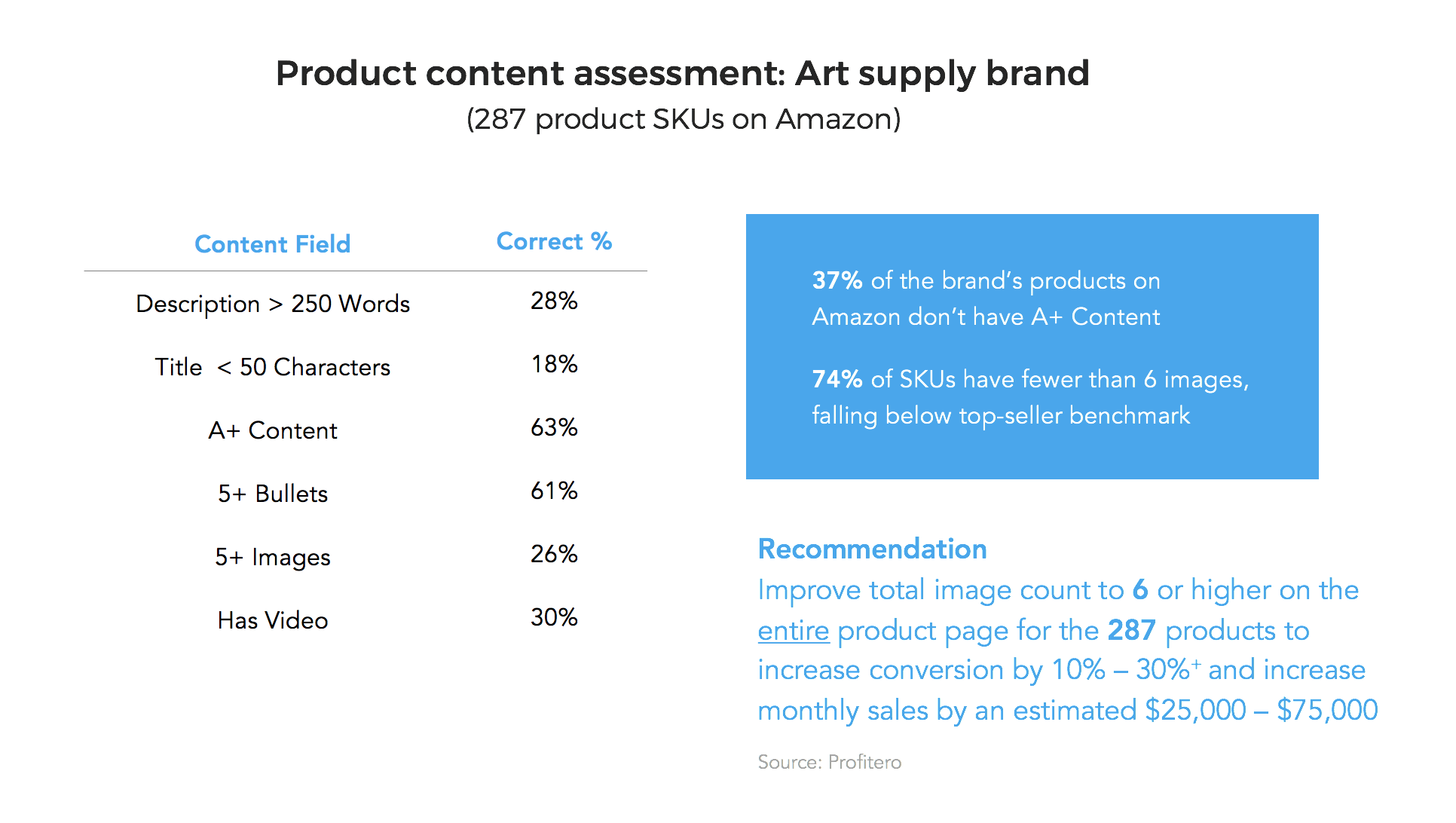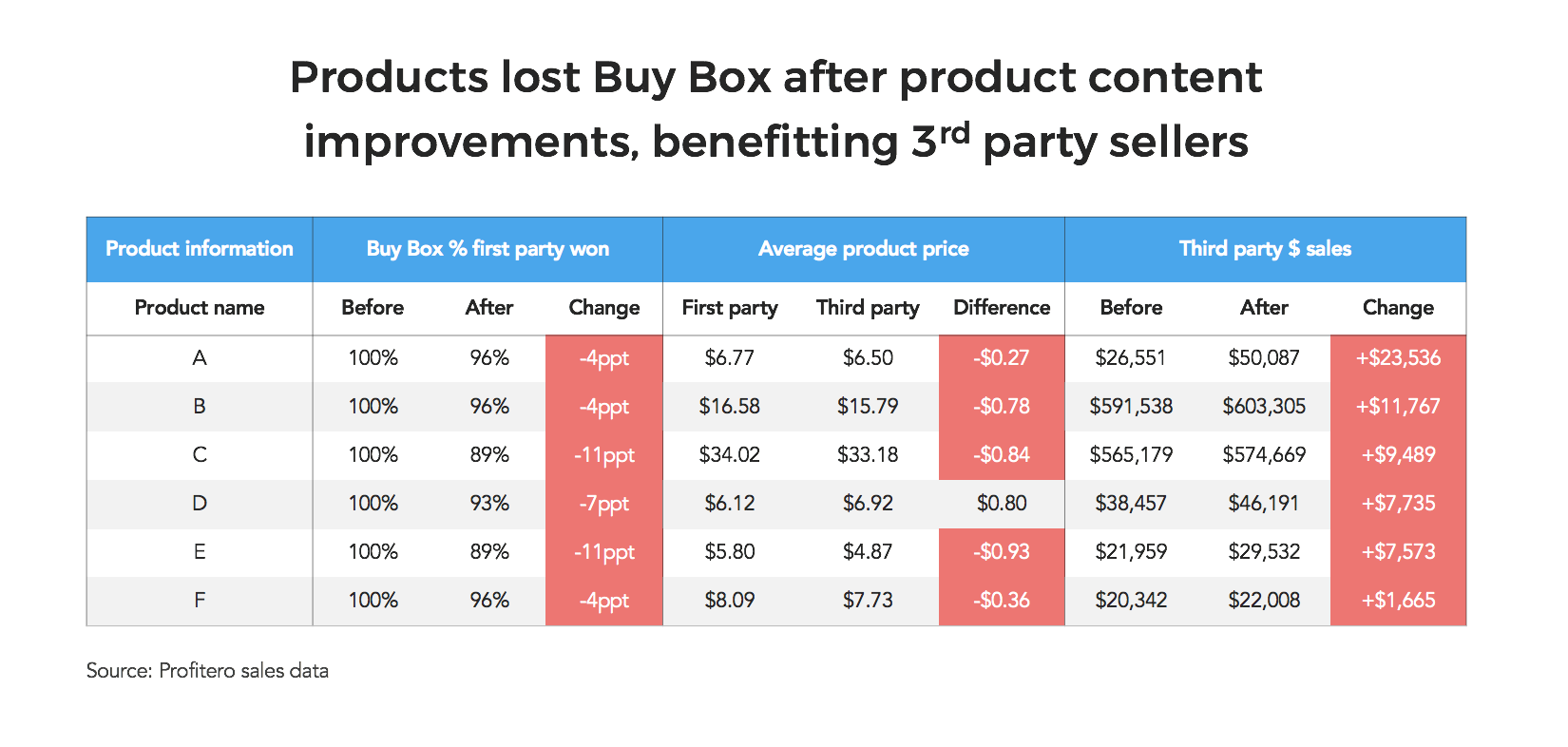

Great product content is a dual-threat weapon for accelerating your online sales. On one hand, it boosts traffic to your product pages by influencing where a product shows up in search. On the other hand, it influences conversion by providing the information consumers need to compare alternatives and justify decisions.
As an example: Profitero worked with a leading food manufacturer to enhance content for two of their leading brands. Across 32 SKUs, the brand team added several new images to product pages and lengthened product descriptions. On average, the brands saw their share of Amazon Page 1 search results improve by 43% for relevant category keywords. Product sales based on these same keywords improved by 78%.
Despite the benefits, it can be costly to enhance product page content, not to mention time-consuming. It’s not unreasonable to spend $50k-200k on content enhancements, depending on how many products you fix and if agencies are used. You don’t want to invest without a payout.
We often see brands make 3 critical mistakes that sabotage their Content ROI.
1. Taking a shotgun approach
As mentioned, content creation costs a lot, so you want to invest wisely. Instead of taking a shotgun approach, use a combination of data points to locate the product pages that are most in need of fixing within your portfolios.
For example, sales & share data will help you locate the competitor’s products you want to gain share against. Traffic & search placement data will show you which product pages are lacking key content attributes to win their fair share of organic search. And conversion data will tell you which product pages are not convincing shoppers to convert, despite having high traffic.
2. Optimizing without a plan
Once product pages have been prioritized, you still need to pinpoint which content variables you need to fix. This can be overwhelming – and it’s also subjective. That’s why it’s always a good idea to measure your product pages against benchmarks.
By looking at top-selling competitors – and top-selling brands generally – you can establish an objective yardstick for knowing what it takes to win. For example, if your product pages have the same length descriptions as benchmarks, then it’s probably not an area you’ll gain much leverage from. Instead, you may decide to focus efforts on images or videos.
Our general rule of thumb: assess your product pages first looking at what’s incorrect or missing across your standard above-the-fold and below-the-fold content fields. Incorrect information is bad for the brand, and in the case of retailers like Walmart, grounds for losing your favored vendor status.
For determining what to enhance, we recommend following this order, which most closely correlates with sales increases.
Presence of Videos > # Images > Presence of A+ content > Description length & quality
In this real-life example, you can see how a national art supply brand recently fared in a content audit conducted by Profitero. The brand found that Amazon was displaying incorrect content for many of their brands. They also learned that many of their product pages were under-performing against benchmarks, resulting in a major sales loss.

3. Sabotaging good content with poor supply & pricing
Content is only one factor influencing traffic and conversion. Other factors, such as price, availability, reviews and search placement also impact these levers, so it’s possible to improve your content, but not boost sales.
For example, a pet manufacturer recently improved content across 100 SKUs. But 78 SKUs saw no sales improvement because third-party sellers either beat them on price or the products were out of stock. Fourteen of these products had been winning the Buy Box just days before the content changes were made.
The manufacturer had hoped these content enhancements would allow them to pull ahead of competitors, but instead their sales grew at the exact same rate as the category.

To learn more about getting the most out of your product content, download Content that Converts: The guide to creating winning eCommerce product pages.
How Profitero can help
We recognize that content creation is hard. This is why we give you an expert analyst team to make sure your investments in content are maximized, not wasted. Your expert team will:
- Tell you what content enhancements are critical to make, based on how your product pages compare against benchmarks
- Alert you to underlying product availability and pricing issues so you can divert energy away from high-risk products that don’t stand a chance of winning the Buy Box
- Use our Amazon sales & share data to help you quantify the pre and post impact of your content changes so you can build a stronger ROI case for more content budget
Want to get working on a better content approach? Contact us today.


























